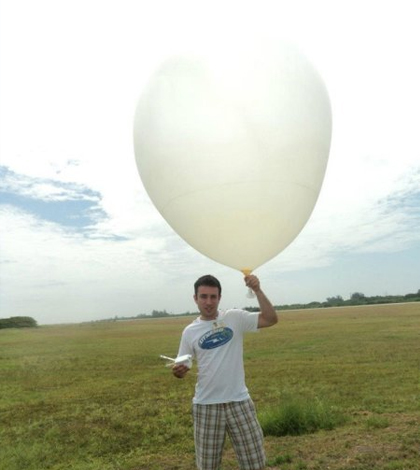Madden-Julian Oscillation Model Explains Tropical Weather Phenomenon

Angel Adames with a research weather balloon and box to track temperatures and more at the DYNAMO field campaign in the Maldive Islands. (Credit: University of Washington)
The Madden-Julian Oscillation (MJO) is a system of tropical storms which appears over the Indian and Pacific Oceans at regular intervals of 45 days. A new model has not only succeeded in capturing its 45-day frequency, but also the size of the storms and consistent direction of cloud movements to the east, according to a release from the University of Washington.
The theoretical model incorporates several current theories about the MJO, including the notion that it is not hot and cold air masses that are driving the weather fluctuations, as would be the typical case inland, but rather areas of high humidity. It’s believed that the MJO creates areas of high humidity which then turn into huge thunderstorms. The movement of the MJO storm system to the east is shown in the model to disrupt weather in the west, setting up the conditions for another large storm system and repeating the pattern.
Researchers compared their theoretical results to NASA Tropical Rainfall Measuring Mission satellite data. The model seemed to successfully reflect MJO behavior. But it is unknown why the storm system sometimes disappears for months at a time.
Top image: Angel Adames with a research weather balloon at the DYNAMO field campaign in the Maldive Islands. (Credit: University of Washington)




0 comments